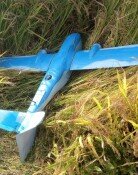Development of Patch-type Combat Rations Suggested
Development of Patch-type Combat Rations Suggested
Posted July. 05, 2010 12:37,
A soldier in full gear has to carry 20 kilograms of weight, including four to five kilograms of vacuum-packed combat rations, because eating a normal meal in a battle situation is impossible.
To alleviate the burden from combat rations, many military voices suggest the need to develop patch-type combat rations that can be attached to the body.
Lt. Maj. Han Dong-min of the Consolidated Army Logistics School and Maj. Cho Min-cheol suggested in a contribution to the latest edition of Combat Development published by the Army Training and Doctrine Command, As illustrated in an Army munitions policy report and comprehensive development plans for non-weapon systems, we should develop patch-type combat rations to replace the existing system by 2025.
The suggestion has a theoretical base in the Transdermal Nutrient Delivery System announced by the U.S. Defense Department in August 2000. The U.S. Army is conducting R&D for the plan with the aim of full adoption by 2025.
The transdermal system is a patch that supplies essential vitamins and nutrition to soldiers through the skin. Just as a nicotine patch that helps people quit smoking has been commercialized, the transdermal system can break down essential nutrients into small particles and supply it to the body.
This approach can simultaneously resolve the challenges of heavy weight and difficulty in finding the right moment to eat in combat.
The patch works on a simple theory. A near-infrared ray attached to the patch checks the metabolism of a soldier and supplies the nutrition needed to the capillary vessel and skin pores temporarily expanded by electric stimulus. The patch should be developed to a level where a single patch-type combat ration can enable up to four days of operations, Han and Cho said in their contribution.
The patch-type combat ration must overcome many hurdles before official distribution after gaining medical approval. There is no precedent of the commercial application of transdermal supply of nutrition apart from drug substances, and molecular compression technology is needed to supply essential energy sources mainly comprised of high molecular substances.
Other risk factors include bacterial contamination, expiration and allergic response. Han and Cho also said, The issue of not feeling full can be resolved by including a substance in the patch to prevent the feeling of hunger, but depriving soldiers of the joy of eating could undermine their commitment to combat. This should also be addressed.
srkim@donga.com



![‘건강 지킴이’ 당근, 효능 높이는 섭취법[정세연의 음식처방]](https://dimg.donga.com/c/138/175/90/1/wps/NEWS/IMAGE/2026/01/18/133181291.1.jpg)



